History
Tet Offensive
The Tet Offensive was a major military campaign during the Vietnam War launched by the Viet Cong and North Vietnamese forces in 1968. It involved simultaneous attacks on multiple targets in South Vietnam, including cities and military installations. Although the offensive was ultimately repelled by U.S. and South Vietnamese forces, it had a significant impact on public opinion and the course of the war.
Written by Perlego with AI-assistance
Related key terms
Related key terms
1 of 4
Related key terms
1 of 3
12 Key excerpts on "Tet Offensive"
- eBook - ePub
- Andrew Wiest, Chris McNab(Authors)
- 2011(Publication Date)
- Amber Books Ltd(Publisher)
CHAPTER 8 The Tet OffensiveBy 1968 the communists had accrued such losses in the Vietnam War that they were willing to gamble everything on a massive offensive designed to end the war. The goal of the Tet Offensive was to launch a surprise attack on the urban areas of South Vietnam, hopefully sparking an uprising that would force the United States to exit the conflict. Although the series of attacks met with some initial success, the Vietcong actually suffered a debilitating countrywide defeat at the hands of superior US firepower. The defeat, though, eventually turned into victory, for this most important event of the Vietnam War caused American resolve to crumble.By late 1967 the Vietnam War had reached a turning point. For over two years United States forces had been involved in battles designed to ‘find, fix and finish’ Vietcong and North Vietnamese forces. These battles had achieved a high ‘body count’ and both President Johnson and General Westmoreland truly believed that the US was winning the war. However, there were cracks beginning to appear in the American body politic. From the campuses of California to Washington, D.C., anti-war protests became more numerous and more violent, and the public watched the growing spectacle of divisiveness on their television newscasts nightly. The protests and their attendant media coverage were of great concern for Johnson, and he decided to retaliate by launching a publicity campaign to allay American fears about the war. Towards this end Johnson called upon several trusted officials, including ex-presidents Truman and Eisenhower, to endorse his actions in Vietnam. Johnson even enlisted Westmoreland himself to assure the nation that the United States was indeed winning the war. Westmoreland played his role with alacrity, assuring his fellow citizens that the end of the war was within sight. Indeed he claimed that the battles of attrition had so weakened the enemy that North Vietnam would be unable to launch any significant military operations in the coming year. Once again the administration had promised its people a victorious war. However, like so many promises made during the conflict, it was a hollow one. The truth of the matter would nearly rend the divided nation asunder. - eBook - ePub
- R. B. Smith, Beryl Williams, Beryl Williams(Authors)
- 2012(Publication Date)
- Routledge(Publisher)
6 The TET crisis of 1967–1968 in perspectiveSource: Extracted from an unpublished Research Paper delivered in Washington 1998.The Communist offensive of Tet Mau-Than (January–February 1968) was one of the most important turning points of the Vietnam War, and also a focus of subsequent controversy on both sides. Most Americans agreed, however, that the element of ‘surprise’ in both the timing and the nature of the offensive required some explanation – and possibly the condemnation of those who had been ‘to blame’. For many civilian commentators, the very fact that the nation-wide offensive occurred at all was taken as vindication of their view – already established by mid-1967 – that the war was ‘un-winnable’ and that the only sensible path was for the United States to withdraw as soon as possible on whatever terms could be negotiated. To the American generals, on the other hand, the outcome of the offensive appeared as a major setback for the Communist side – which US forces should have been able to follow up with an offensive of their own which could then have inflicted decisive defeat on the Communists. But in the event, the Communist offensive produced a ‘moment of truth’ in Washington’s continuing debate about further escalation of the war, and it set the scene for the critical decisions announced in President Johnson’s televised address of 31 March 1968. - eBook - ePub
Vietnam
An American Ordeal
- George Donelson Moss(Author)
- 2020(Publication Date)
- Routledge(Publisher)
3But news of the Tet coup de main broke like a thunderclap across America (Figure 8.1 ). The fact that the enemy could mount a major military effort all over South Vietnam and catch the Allies by surprise shattered all illusions of impending American victory in the war. Tet suggested that all the years of bombing, attrition warfare, pacification, body counts, and computer printouts that claimed, by all quantitative measures, that the United States was winning the war, had not meant a thing. In the wake of Tet, Americans realized that the United States had involved itself in a stalemated war in Southeast Asia.Figure 8.1 The Tet-68 Offensive. Public domain .Tet constituted a major turning point in the Vietnam War. Two months after Tet-68, President Johnson felt compelled to scale back the bombing of North Vietnam and put a ceiling on the number of U.S. ground combat forces committed to South Vietnam. The Communist offensive forced Washington to confront the reality that it was fighting a war that it was not winning, nor was likely to win at any reasonable cost. Because President Johnson was eventually forced to abandon the strategy of graduated escalation in order to resolve a number of military, economic, and political crises, the first few months of 1968 are the most important in the entire history of the long U.S. involvement in Vietnam.Hanoi Plans a General Offensive
Planning for Tet Mau Than began in early 1967 and continued into January 1968. Although the offensive caught the Americans and South Vietnamese by surprise and represented a major turning point in the Vietnam War, much about Hanoi’s strategic deliberations leading up to the attacks has remained unclear to American historians of the Vietnam War. What were the DRV leaders’ major concerns as they worked out the details of their overall strategy and military operations? Why did they launch a general offensive against the towns and cities of South Vietnam? What were their primary goals? Vietnamese official histories cite the failure of the Americans to achieve a quick victory over the insurgents as the prime factor in Hanoi’s decision to launch their attacks. The failures of the U.S. war of attrition and of Rolling Thunder, reinforced by Hanoi’s perceptions of growing popular disillusionment with Johnson’s war policies, encouraged Hanoi to move the revolution to a higher stage and seek a decisive victory.4 - eBook - ePub
Vietnam
An American Ordeal
- George Donelson Moss(Author)
- 2016(Publication Date)
- Routledge(Publisher)
CHAPTER 8 The Tet Offensive, January 30 to March 31, 1968THE BATTLES THAT CHANGED THE COURSE OF THE VIETNAM WARThe Tet Offensive was the largest and most important campaign of the American Vietnam War, and it also changed the course of that war. Taking advantage of the cease-fire called to celebrate Tet, the beginning of the lunar new year and Vietnam’s most important holiday, some 84,000 VietCong and NVA soldiers launched simultaneous attacks during the early morning hours of January 30, 1968,1 extending from the demilitarized zone in the north to the Ca Mau peninsula in the south. They attacked 5 of the 6 largest cities, including Saigon, 36 of 44 provincial capitals, and 64 of 242 district capitals. Within South Vietnam’s beleaguered towns and cities, ARVN forces, its ranks depleted by the absence of many soldiers who went home for the holidays, fought to defend governmental and military installations, the major targets of the enemy assaults. The offensive caught the Allied command by surprise. Convinced that any enemy assaults would occur on the northernmost provinces and the Marine base at Khe Sanh, the Allied leaders “could not conceive of an attack of the magnitude of what occurred during the Tet holiday.”2Although caught by surprise, RVN and U.S. troops quickly recovered and counterattacked effectively. Using their superior firepower and mobility, they were able to expunge the VietCong and PAVN forces from the towns and cities. Nearly everywhere they repulsed the attackers quickly, usually inflicting severe losses. Almost nowhere did the attackers have time to secure their positions, and they did not receive any significant support from the residents. General Westmoreland quickly judged the Communist offensive to be a complete military failure.3But news of the Tet coup de main - eBook - ePub
New Perspectives on the History and Historiography of Southeast Asia
Continuing Explorations
- Michael Arthur Aung-Thwin, Kenneth Hall(Authors)
- 2011(Publication Date)
- Routledge(Publisher)
Many Americans have long been inclined to ignore the “agency” of the Vietnamese on both sides in the Vietnam War, to assume that what really mattered were American policies and American decisions. Many of the myths about the Tet Offensive, which suggest that the Tet Offensive came as a shock to the United States only because there were Americans who misunderstood or misrepresented the situation in Vietnam, not because the Communists had managed to do anything that would have been shocking if accurately described, are examples of this tendency. The myths deny the agency of the Vietnamese Communists in the political victory they won in 1968.The Tet Offensive was a crucial turning point in the Vietnam War. People’s beliefs about the offensive influence their views on the overall pattern of the war, and the lessons they draw from it. This is especially true of lessons in regard to the role of the media. It is disturbing, then, to realize to what extent crucial aspects of it have been misunderstood. An accurate view of the Tet Offensive will not necessarily lead to correct lessons applicable to future wars, but it may at least save us from some false lessons.Notes1 Brigadier General Phillip B. Davidson, Jr., Assistant Chief of Staff, J2, “New Procedures for OB,”August 15, 1967. In the Virtual Vietnam Archive of the Vietnam Project, at Texas Tech University (hereafter TTU), this is item # 0240715002.2 “MACV Briefing on Enemy Order of Battle, November 24, 1967” (TTU # 0240817003). Combined Intelligence Center, Vietnam, “Monthly Order of Battle Summary, 1 October thru 31 October 1967” (TTU # 0240801005), section I, pp. 1, 21–25. See also Tom Buckley, “U.S. Cuts Estimate of Foe’s Strength,” New York Times, November 25, 1967, p. 3.3 Combined Intelligence Center, Vietnam, “Order of Battle Summary, 1 January thru 31 January 1968” (TTU # 0240907005), section I, p. 1.4 General William C. Westmoreland at the National Press Club, Washington, D.C., November 21, 1967, text in Peter Braestrup, Big Story, (BO, Colorado: Westview, 1977, vol. 2, pp. 4–5, 10.5 Don Oberdorfer, Tet, New York: Avon, 1972, pp. 119–20, citing an article by Orr Kelly, Washington Evening Star, November 7, 1967, p. 1.6 MACV Office of Information, “1967 Wrap-Up: A Year of Progress” (TTU # 168300010742), p. 1.7 Figures released by the Comptroller, Office of the Secretary of Defense, 1971, in Raphael Littauer and Norman Uphoff (eds.) The Air War in Indochina, rev. ed., Boston: Beacon Press, 1972, pp. 267–8.8 Gerald J. DeGroot, The Sixties Unplugged: A Kaleidoscopic History of a Disorderly Decade - eBook - ePub
The Dynamics Of Defeat
The Vietnam War In Hau Nghia Province
- Eric M Bergerud(Author)
- 2018(Publication Date)
- Routledge(Publisher)
6Battle: The Tet Offensive, 1968The Origins of the Tet Offensive
Although they recognized that the position of the GVN in Hau Nghia and some other “hard-core” provinces, such as Binh Dinh and Long An, was still precarious at the beginning of 1968, American political and military leaders generally were pleased with the apparent course of the war. They believed that U.S. military pressure was slowly forcing enemy main force units away from the populated areas. Americans anticipated that ARVN and territorial forces increasingly would be able to defend the cities, “secure” rural areas, and extend government control farther and farther into Front territory. On the military side, the views that Army Chief of Staff Harold Johnson expressed to a journalist were representative:If you exclude the two northernmost provinces of South Vietnam, just south of the Demilitarized Zone, you find that the major forces of the enemy have already been largely broken up. They will have an occasional ability to mount an attack in a force of up to 2,500 in poorly coordinated attacks. But this will be periodic and somewhat spasmodic, because I do not believe that they any longer have the capability of regular, planned reinforcement.1Other officials in Washington, trying to build support for the war effort, gave similar, if more general, descriptions of the situation. President Johnson, in a news conference on 17 November 1967, declared that “the fact that the population under free control has constantly risen … is a very encouraging sign… overall we are making progress.”2 A few days later, Ambassador Ellsworth Bunker claimed the GVN had increased its control from 55 percent of the population to 67 percent.3 The next week, Vice President Humphrey told “Meet the Press” that the allies held both the political and military initiative.4 The most highly publicized expression of optimism came from General Westmoreland, who had gone to Washington to deliver a “progress report.” On 21 November, he told the National Press Club that “I am absolutely certain that, whereas in 1965 the enemy was winning, today he is certainly losing.” Although the general cautioned against any expectation of a clear-cut military victory, he pointed out that it had taken until mid-1967 to prepare the logistical base for sustained operations and that presently the enemy faced the full force of U.S. arms. He further predicted that, “in two years or less,” American forces would be able to begin to shift the combat burden to ARVN and disengage.5 Robert Komer evidenced even greater optimism in a cable sent to Lieutenant General Khang, commander of III CTZ, on 1 January 1968: “I do believe that with all RVNAF [Republic of Vietnam Armed Forces] and Free World Forces taking the offensive in 1968, together with greatly stepped-up operations against the VC infrastructure, victory will come within our grasp.”6 - eBook - ePub
Vietnam War
A Topical Exploration and Primary Source Collection [2 volumes]
- James H. Willbanks, James H. Willbanks, James H. Willbanks(Authors)
- 2017(Publication Date)
- ABC-CLIO(Publisher)
The Tet OffensiveOn January 30–31, 1968, the North Vietnamese Army and the Viet Cong launched a massive general offensive that included attacks on 5 of 6 autonomous cities, 36 of 44 province capitals, 72 of 245 district towns, and 23 airfields/bases. The heaviest fighting was in Saigon, Hue, and at Khe Sanh, the remote Marine base near the Laotian border. After the U.S. and Allied forces recovered from the initial surprise of the attack, they acquitted themselves very well, inflicting over 40,000 casualties on the attackers. Although the offensive proved to be a stunning defeat for the Communists, the surprise and scope of the attacks led to a psychological victory for Hanoi. The offensive proved to be the turning point of the Vietnam War and its effects were far reaching—it changed the entire way that the United States approached the war—before the Tet Offensive the U.S. objective in Vietnam was to win the war—after the Tet Offensive, the U.S. objective shifted toward finding a face-saving way to get out of Vietnam.BEN TRE, BATTLE OF Start Date: January 31, 1968 End Date: February 2, 1968A fierce battle raged for control of Ben Tre in the Republic of Vietnam (RVN, South Vietnam) during the 1968 Communist Tet Offensive. Ben Tre, with a population of 18,000 people, was the capital of Ben Tre Province, located less than 50 miles south of Saigon in the northeastern region of the Mekong Delta. The area around the town is covered with rice paddies and coconut groves. During the month prior to Tet, tension remained high in the province as intelligence reports indicated Viet Cong (VC) units moving into staging areas prior to the launching of ground attacks.VC units numbering some 2,500 men began to infiltrate Ben Tre during the night of January 30–31, 1968. Gunfire broke out at 4:00 a.m., followed by a mortar barrage and small-arms fire that lashed the downtown South Vietnamese administrative bunker complex. After fierce fighting, Army of the Republic of Vietnam (ARVN, South Vietnamese Army) forces secured the vicinity of the provincial hospital and reinforced troops at the beleaguered local radio station. Beginning in the afternoon and continuing through the next morning, two battalions of the U.S. 9th Infantry Division were deployed by air to prevent the town from being overrun. - eBook - ePub
The Tet Offensive
A Brief History with Documents
- William Thomas Allison(Author)
- 2010(Publication Date)
- Routledge(Publisher)
Gary R. Hess, an historian of American foreign relations, contends that the North Vietnamese wanted to exploit an overextended American military and economy that was losing public support at home. The Tet Offensive, Hesssuggests, was to inflict such massive casualties on American forces that the Johnson administration would have to reconsider the military, financial, and political costs of continuing the war. Such a military strike would also cause South Vietnamese leaders to lose faith in their American allies, thus dividing the alliance. North Vietnamese leaders ultimately hoped that the Tet Offensive would move the conflict into a brief fighting-while-negotiating phase.12 Historian George Donelson Moss maintains that the General Uprising was the key objective if any success in the Tet attacks was to be achieved. Without the uprising and subsequent overthrow of the South Vietnamese government, a coalition government was impossible, thus making a negotiated settlement improbable.13Ronnie E. Ford claims that the Tet Offensive was never meant to be a “go for broke” effort to quickly win the war, but rather the offensive was a “continual process” of attacks and uprisings to gain strength as the war entered a fighting-while-negotiating phase.14 Another historian of the Vietnam War, George C. Herring, notes that while the North Vietnamese at the least hoped the offensive would begin a fighting-while-negotiating phase, the maximum result was to be the collapse of the South Vietnamese government, the withdrawal of American forces, and a new coalition government under NLF control.15Passage contains an image
The Tet campaign
The first phase of the Tet Offensive began in the fall of 1967. Because the final plan and authorization was not issued until December 1967 and planning had been so secretive, PLAF units in particular had little time to prepare for highly visible and dangerous missions. Many chains of command had to be reorganized as units were reconfigured to meet whatever operation they were assigned. Operational security was paramount to the success of the initial Tet attacks. Such stress on secrecy, however, had the unintended consequence of leaving many officers and units in the dark as to how their particular mission fit into a broader operation. Moving large amounts of material and thousands of troops along infiltration routes across the DMZ and down the Ho Chi Minh Trail was also a major security hazard. New recruits were needed to fill out under-strength units, which trained hard to make the paradigm shift from guerilla-style tactics to urban warfare methods required for fighting in the cities. Preparing for the offensive was a tremendous and risky undertaking. - eBook - ePub
- David L. Anderson(Author)
- 2017(Publication Date)
- Bloomsbury Academic(Publisher)
4 Contention: Antiwar Protests, the Tet Offensive, and a Tumultuous ElectionThe US war in Vietnam reached a turning point in 1968. As the level of fighting and the human and financial costs escalated from 1965 to 1968, public opinion in the United States, which at first supported the war, began to change, and a significant and highly vocal protest movement appeared. Organized resistance to the war expanded as the US involvement grew. Lyndon Johnson’s efforts in late 1967 to assure the public of progress in the war effort were a direct response to the outspoken criticism of American policy in Vietnam. Only a month after General William Westmoreland, at Johnson’s urging, had reported that the end of the war was coming into sight, the military forces of the National Liberation Front (NLF) and the Democratic Republic of Vietnam (DRV) launched a surprise offensive throughout South Vietnam. This Tet Offensive, named for the Vietnamese lunar new year celebration, had a dramatic impact on American public opinion and challenged the credibility of the administration’s optimistic forecasts. Although US and Army of the Republic of Vietnam (ARVN) forces reversed the military thrust of the Tet Offensive, the intense fighting began a chain of events that represented a halt in the escalation of the American war. Heavy ground combat continued, but shortly after Tet Johnson reduced the extent of bombing in North Vietnam and withdrew himself as a candidate for reelection. The war figured significantly in the 1968 presidential campaign, although civil rights, law and order, and the national economy were also key issues. Antiwar protests produced a tumultuous and violent Democratic National Convention in Chicago in August. The election in November failed to be a referendum on the war, but it resulted in a very close victory by Republican Richard Nixon over Johnson’s Vice President, Hubert Humphrey. The military and political developments of 1968 had produced a change in American leadership and begun active pursuit of a way for the United States to withdraw with honor, as Nixon put it, from the war. - eBook - ePub
The Myths of Tet
The Most Misunderstood Event of the Vietnam War
- Edwin Moise(Author)
- 2017(Publication Date)
- University Press of Kansas(Publisher)
6 THE Tet Offensive, 1968If a large group of people are trying to carry out a complex task for the first time, they will probably do it badly. This is doubly true if they have no opportunity to rehearse before doing it for real.PAVN forces began serious shelling of Khe Sanh, near the northwest corner of South Vietnam, on the night of January 20–21, 1968. This was intended to draw American attention out to this remote area, and thus open the way for the Tet Offensive to achieve surprise when Communist forces hit towns and cities in more populated areas of South Vietnam.The attacks were supposed to hit simultaneously in the early hours (shortly after midnight) of January 31. They have often been described as well coordinated. Historian Gerald DeGroot’s recent account is typical of many: “84,000 soldiers attacked at midnight on January 31, hitting thirty-six provincial capitals, sixty-four district capitals, and a number of military bases.”1 Douglas Pike was so impressed as to write that only General Vo Nguyen Giap, “one of the best tactical commanders of the 20th century, . . . meticulous in his planning, . . . could have supervised the elaborate synchronization” of the Tet Offensive.2In reality, gross failures of synchronization caused the Tet Offensive to begin gradually, over a space of several days. Many authors have noticed significant parts of this problem; fewer have realized how bad it was.3The order that was sent south said the offensive was to begin during the first night of Tet. Most Communist headquarters in the South interpreted this correctly as meaning the night of January 30–31, the first night by the traditional calendar used in South Vietnam. But North Vietnam was using a modified calendar in 1968, one that made the night of January 29–30 the first night of Tet. The headquarters for Military Region 5 (the coastal provinces of central Vietnam from Quang Nam to Khanh Hoa) and the B-3 Front (the Central Highlands) thought they were being ordered to attack on that night. Someone in Hanoi realized there had been a misunderstanding, and sent a message to Military Region 5 on the afternoon of January 29, saying that the attack was not to be until the night of January 30–31.4 - eBook - ePub
A Vietnam War Reader
A Documentary History from American and Vietnamese Perspectives
- Michael H. Hunt, Michael H. Hunt(Authors)
- 2010(Publication Date)
- The University of North Carolina Press(Publisher)
NLF seized major population centers with the hope that the attacks would precipitate the collapse of the Saigon government, demoralize the Americans, and thus end the war. The gamble failed on the ground in Vietnam, but it set off shock waves in Washington and throughout the U.S. political system. Lyndon Johnson renounced his claim to another term in the White House and halted the bombing of the North beyond the twentieth parallel in order to initiate negotiations. The slugfest had reached a turning point. Both sides had thrown their best punches, yet both were still standing and still defiant.What followed the Tet Offensive is familiar to historians of war once the knot of conflict is tightly tied: the spasms of violence that engulf the lives of millions, the great passions that bloodshed requires and reinforces, and the social fissures that open up under the steady demands of sacrifice. But every war must end once exhaustion drains away the will if not the capacity to continue the fight. As Vietnamese and American leaders took stock in the wake of the Tet Offensive, they recognized that the knot of their war was tightly tied. How to untie it was by no means clear.Richard Nixon took direction of the war in 1969 determined to avoid anything that resembled a humiliating retreat. His search for an honorable way out began almost from the moment he became president, and it would consume and ultimately doom his presidency. To buck up the American public, Nixon embraced “Vietnamization”— a gradual shift of the ground war from American troops to the ARVN . At the same time, he sought to compel the enemy to settle on terms that gave the U.S.-backed government in Saigon a good chance of survival. To that end he made sure that the ARVN was better armed and that it enjoyed the full support of American airpower. He also dramatically extended the fighting into the areas of Cambodia and Laos that the enemy used for supply lines and refuge.The party leadership under Le Duan had its own substantial set of problems. Hanoi had to worry about Chinese patrons who had been unhappy in 1968 with the prospect of the DRV ’s opening talks with the Johnson administration. To compound tensions, Mao Zedong began his own conversation with the Nixon administration in 1971. Rising contention over their relative influence over Cambodia would by degrees create yet a third and still more difficult layer to the relationship. On top of all this, Hanoi had to make sure that the intense rivalry between Beijing and Moscow (culminating in armed border clashes in early 1969) did not compromise the commitment both those Communist powers had made to the struggle in Vietnam. Morale in the North was beginning to sag. The General Offensive, which had begun in January 1968 and continued through September, ate up scarce resources yet showed no signs of producing a dramatic turn in the war. The NLF - Major General William B. Fulton(Author)
- 2014(Publication Date)
- Normanby Press(Publisher)
Chapter VIII: — Tet Offensive of 1968 and U.S. Reaction
Shortly before the beginning of the three-day cease-fire declared by the government of South Vietnam to celebrate Tet, the lunar new year, the Mobile Riverine Force was ordered to the western portion of Dinh Tuong Province and the eastern part of Kien Phong Province to prevent the enemy from using communication routes running east and southeast through the area. There had been continuous and credible intelligence reports of enemy activity within the area, which was readily accessible to assault craft. The Mobile Riverine Force planned to establish bases along the waterways to provide fire support, as it had done during operations in the preceding November and December.The operation began with the movement north by stages of supporting artillery batteries; as each battery moved, an infantry unit was sent ahead to secure the next fire support base. Four bases were established, three of them north along the Rach Ruong Canal from the Song My Tho to an agroville, one of the many agricultural resettlement areas established by President Diem. Three CH-47 helicopters were used to set down the artillery on the agroville site and the battery was laid and ready to fire by 1800 on 29 January 1968, the beginning of the Tet truce. The fourth base was on Highway 4, about two kilometers north from the river. The Mobile Riverine Force elements met only sporadic sniper fire on the 29th although the CH-47's were fired upon with .50-caliber machine guns.The brigade's two battalions, in addition to defending the fire support bases, actively patrolled in the area of operations. Surveillance was aided by the radars mounted on the assault support patrol boats. At 2100 on 29 January, fifteen rounds of 82-mm. mortar fire were received at one fire support base without causing casualties or damage. No further enemy activity occurred during the remainder of the evening of 29 January and the Mobile Riverine Force dispersed to ambush positions to prevent major enemy movement.
Index pages curate the most relevant extracts from our library of academic textbooks. They’ve been created using an in-house natural language model (NLM), each adding context and meaning to key research topics.
Explore more topic indexes
Explore more topic indexes
1 of 6
Explore more topic indexes
1 of 4
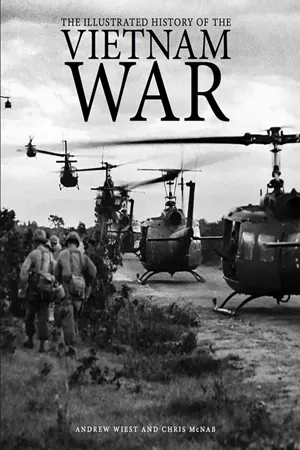

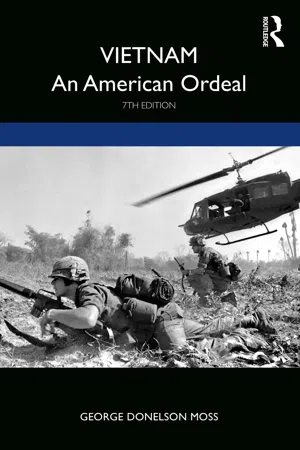




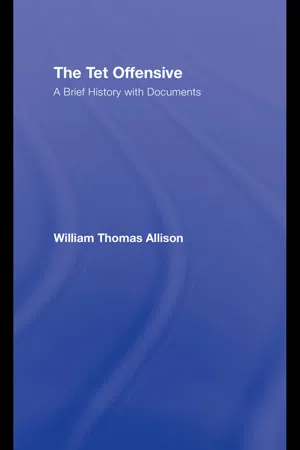

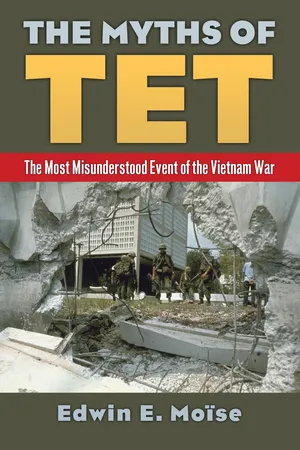
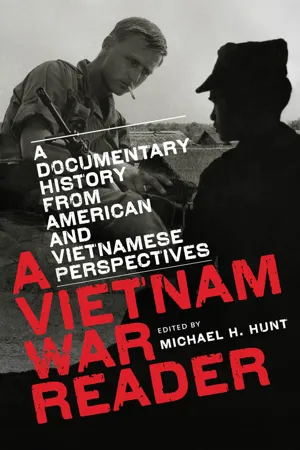
![Vietnam Studies - RIVERINE OPERATIONS 1966-1969 [Illustrated Edition]](https://img.perlego.com/book-covers/3022328/9781782893646_300_450.webp)